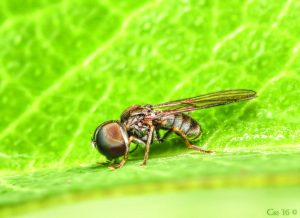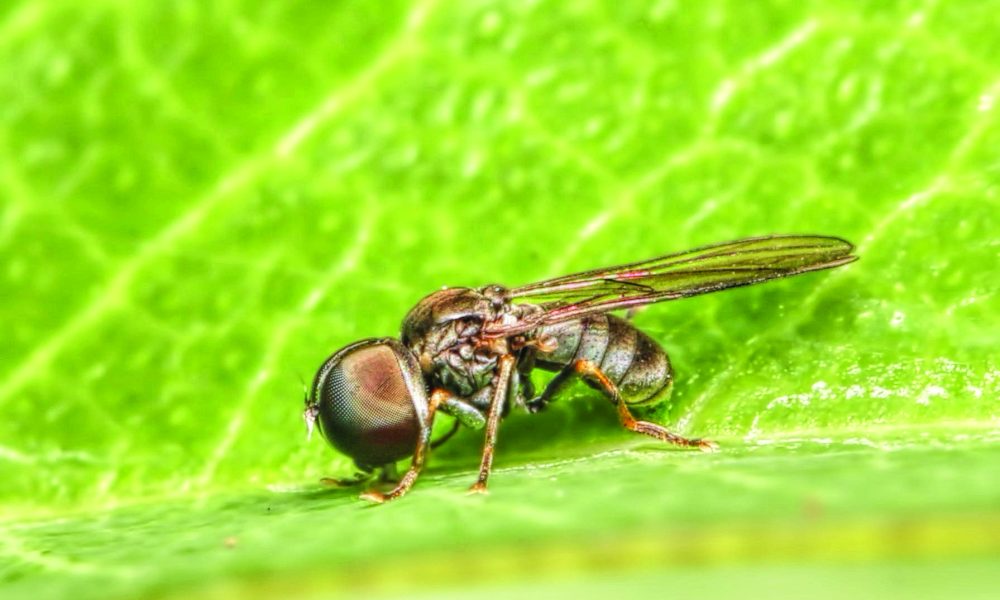
Big-headed fly (Family Pipunculidae)
This week we’ll meet a crawly you might never see, but he’ll sure see you coming! He’s all eyes. Meet the big-headed fly (Family Pipunculidae [Pip·un·CULE·i dae]).
At just one-eighth of an inch in length, the only thing big about this big-headed fly is his head. Most of that giant (relatively speaking) noggin’ is comprised of his “the better to see you with” eyes.
Just imagine how tiny each of those thousands of lenses making up his compound eyes are. He’s a living work of stained-glass art on the wing – including the wings which have a rainbow sheen when viewed at the right angle.
Some species of big-headed flies have vibrant red peepers, but most have dark eyes and black, gray or brown bodies. They’re not a critter that stands out unless you’re really looking for them.
Big-headed flies don’t have any reason to pester humans or other mammals. If you’re a planthopper or treehopper, however, look out!
Big-headed flies parasitize various little hoppers. While plant and treehoppers don’t cause any significant damage to plants outside of an agricultural setting, big-headed flies still land in the “beneficial insect” category for backyard bugs.
For agriculture, they are especially good for controlling potato leafhoppers (Empoasca fabae), a major pest of alfalfa in the Eastern United States.
There are a couple non-native species of planthoppers in our area who can spread disease between one plant and another, so encourage any big-headed fly you see to go after those.
There are 130 species of big-headed fly in North America. Some are a bit larger than our pictured bitty-bit, but even the largest species is under three-quarters of an inch in size. You don’t need to be big when you parasitize very small critters.
It’s the big-headed larvae who are the parasites of hoppers. Adult big-headed prefer sweeter fare, dining on honeydew and sometimes nectar.
They’re most often found hovering around vegetation. There the males look for females or a sweet food source. Females are looking for hoppers. They can be found in all types of habitats, but most species are found in large numbers in forest openings and along forest edges. In semi-arid regions, adults commonly occur at seeps or along small creeks.
Like most winged insects, the adults don’t live very long. They’re most often seen in Oregon in September and October. In California they are on the wing almost year-round.
Once the female big-headed fly lays her egg on the host hopper, it takes the fly nearly two months to reach maturity.
So come next fall if you see a wee fly with ginormous eyes hovering in your shrubbery, give them a tip of the hat and a “thank you” for their masterful pest control services.

